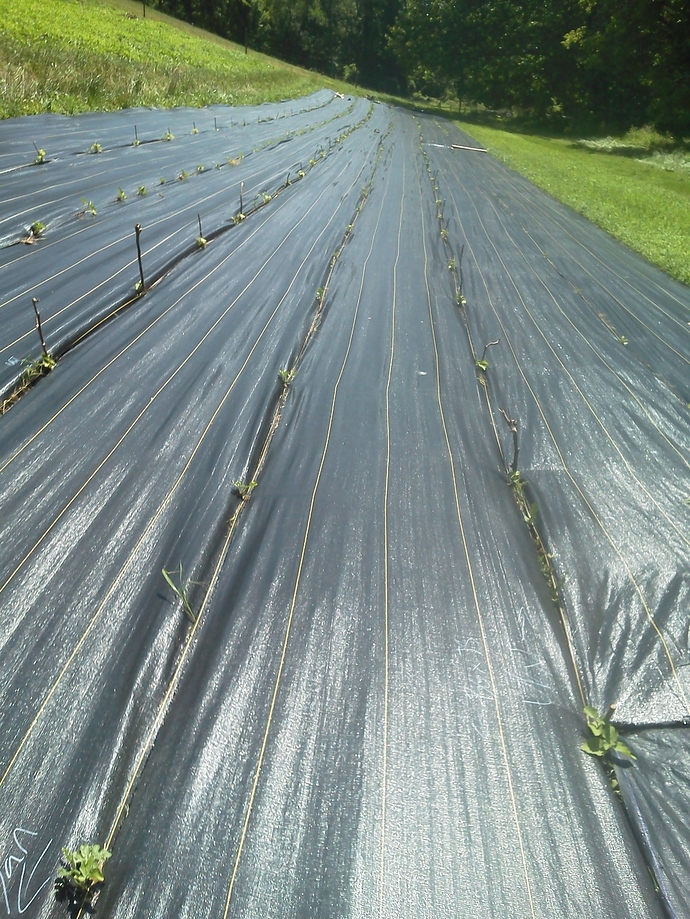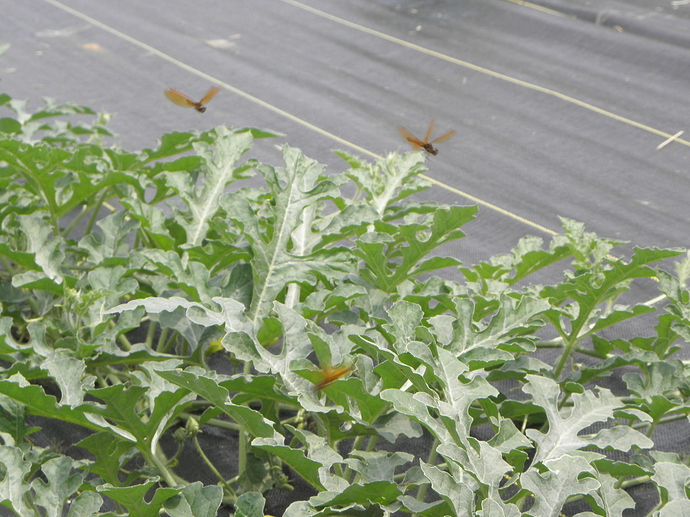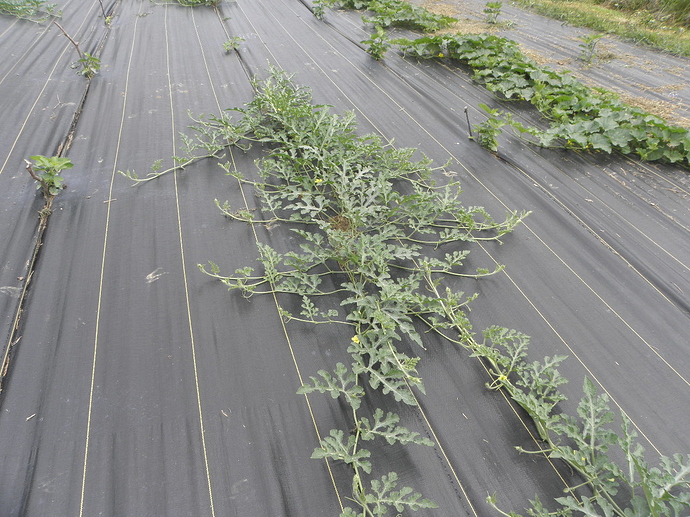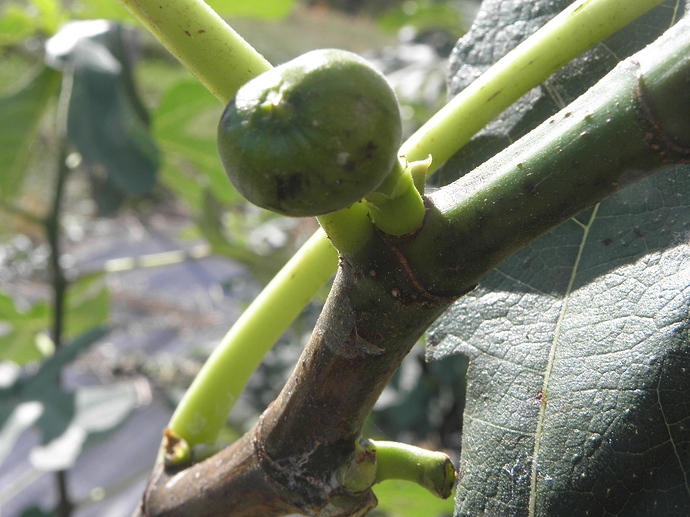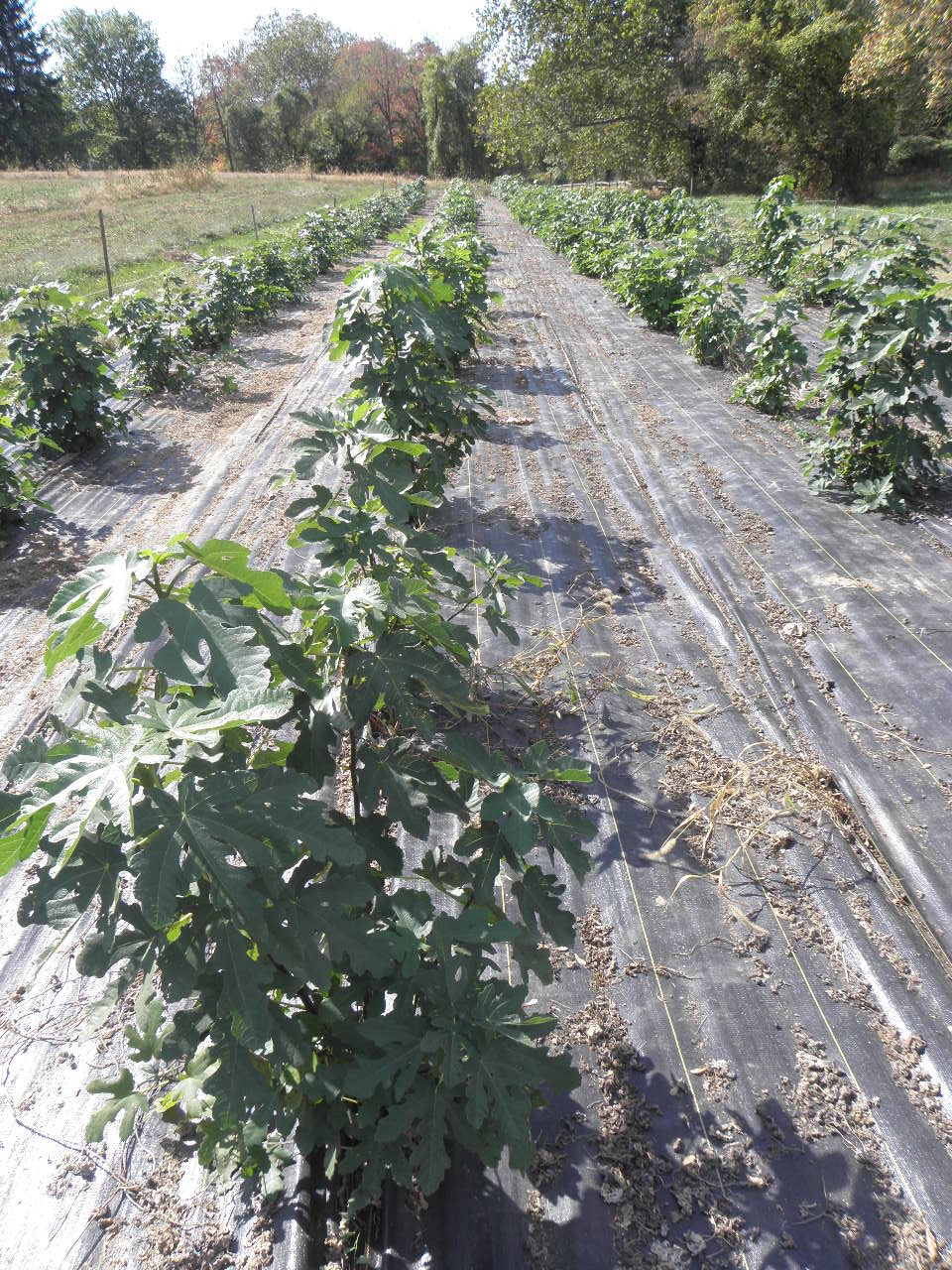Actually I was told, that they are “Box turtles” not desert tortoises, a common mistake, they are often found living on land, near no body of water, they highly resemble desert tortoises. They are not pets, There have been at least 3 of them in our area.
I may have found an answer… A recent scientific study suggests that even smyrnas can ripen a fair percentage of fruit without pollination. This probably won’t go over well with the fig “community”, as uncertainty is generally bad for business and business is booming, with absurd amounts of money being bid on synonyms and a general rush to name and release new finds after a fruit or two. I’ve moved this topic to the lounge to avoid drama here on GF.
As a general update, all but two of the seedlings planted last year died. They were rubbed by a buck but I expected them to survive, a timely reminder that I don’t know everything.
So the Kadota looking one shown above is gone, did not see a point in propagating something so similar to a known variety. All the rest, aside from those in containers, are starting from the ground and I will evaluate precociousness, then they will most likely be discarded since I’ve already propagated all hopefuls. I only have a few (possible) profichi set on one tree that has never fruited before so it looks unlikely I will have any pollen this year.
I’ve rented about a quarter acre for 3 years, half of the plants you see are melons and the others are fig seedlings. Off the top of my head, I’ve put out seedlings from MBVS, Black Greek, Barnisotte, Florea, Unk Pastiliere with another row to go still. They are mostly planted 2 per hole, should be around 400 fig seedlings and 200 melons total. F2s of Magnificenza and Sorbet Swirl, as well as Sugar Baby, Orange Glow, Little Baby Flower, Sugar Cube, Gold Flower and Sangria.
Very strong work. I love it! You’re a very dedicated enthusiast.
Thanks, I hope I know what I’m doing 
Are you trying to breed new watermelon varieties? or are these for selling the melons and making some profit?
People don’t buy seeded watermelons anymore, unfortunately. But the plan is to self pollinate one melon from each F2 and hope to get lucky. I’m going to be dehydrating lots of cantaloupe chips and watermelon jerky and probably make some watermelon syrup.
I put in the last row of figs today and it looks like almost all of the Orange Glows, Sugar Babies, and Gold Flowers got their stems fried by the ground cover. I was in a rush to get them planted so they were not all that well hardened off, I’ve got more Magnificenza F2s ready to replace them.
How do you make watermelon jerky?
Just slice it ~.25" and dehydrate, I leave it a little chewier than cantaloupe chips and store it in the freezer. It is amazing how much it shrinks down, a 10# melon ends up fitting in a quart ziploc.
Forgive my ignorance, but I still don’t understand, are you
making jerky out of the rind or the melon itself. The melon is
90% water. It doesn’t have the substance that canteloupe has.
The melon itself, I went looking for a recipe and found that some people also do it in the oven @ 250 and then reducing to 200 to finish, going to try that this year. I just leave the seeds in, since I like eating them. Chile and salt are optional, I’ve never tried that. It is sort of like dissolving super sweet watermelon flavored bubble gum.
And forgot to mention, I put it on parchment paper in the dehydrator.
They are coming along, I added a third fig seedling to most spots since I had extras of most crosses. A bunch more melons died in patches from root rot, replaced heavily with the last of the Magnificenza F2’s to see if some will have resistance to whatever is in the soil in those spots. There were hundreds of dragonflies interested in the watermelons today for some reason. I was a little worried that pure no till with no fertilizer would stunt the melons but they seem happy enough, the soil is now plenty loose from all the grass roots decomposing.
Brent, thanks so much for posting this! This is a fascinating project, and I greatly look forward to seeing more of its fruits in coming seasons. We’re going to have to start calling you the Human Fig Wasp—or maybe Blastophaga Brent (for the alliteration).
I’m still a little lost when it comes to the intricacies of fig reproduction, so definitely need to do some reading on this (and also on general genetics and plant breeding, especially works geared toward the dopey layman—i.e., me!) this fall/winter. Any recommendations?
BTW, I’m definitely interested in any updates on the melon project, too.
These are some good summaries. https://www2.palomar.edu/users/warmstrong/pljun99b.htm
http://figs4fun.com/links/FigLink006a.pdf
I linked to a video above about the sycamore fig, reproduction is basically the same except there is only one sex in that species.
I don’t know a whole lot about breeding, I read some things about watermelons and it was tough to get my head wrapped around, not sure I have to be honest. There’s way more info available for watermelons though.
I bought a Ivan Michurin book over the winter but still have not read much of it, he only briefly mentions figs, and it predates genetics so is probably outdated. I’ve been “breeding” lettuce the longest, and that seems pretty straight forward, save seed from random F1 plants (I know the mothers of course) and grow them out to see what you get, select the best for the next generation. Lettuce mostly self pollinates, so it is a lot easier and I can cut and sell all of the rest.
The Magnificenza F2s were really diverse, wish I had taken more pictures. Most were just OK though, and pretty much all of the flowers I hand pollinated aborted for them and the Sorbet Swirl both. I did save some seeds, but I’m thinking that I will try Sugar Cube F2s next year, the flavor was much better, and probably try segregating them by distance to avoid cross pollination.
The Sorbet Swirls were not as diverse, I was expecting more, but going back and looking at the description from Johnnys… I don’t think it is an F1 at all! More like an F4, they describe fruits being “round to oval”, and “average” 10# but F1 hybrids are consistent. I should have known last year, the one plant I had made 25# melons. Doesn’t bother me really, that’s fewer generations I need to grow out to get a consistent open pollinated variety, if I was growing them for market though that would have been a problem.
Thanks, Brent! I’m a little slow on the uptake, especially when it comes to science, but I’m going to see if I can figure some of this out.
Heck, I think I might start fiddling around with lettuce a little bit!
I was a little surprised that a handful of trees produced figs in their first year large enough that I was able to sort males and females, about a dozen others made fruit buds. It was mostly the trees that dominated in each planting location, so I’m not entirely sure if it is a true test of precociousness yet, but thinking of doing an ultra high density planting next spring to identify more that fruit when young.
There’s a slight chance of frost on Friday, and the bucks have started rubbing some trees so I am going to bend them over and cover temporarily.
I had a first ripe fruit from #6, which was pretty good. The mother tree that died to the ground last winter set some fruit, which won’t have time to ripen unfortunately, but the container tree only set the one that ripened. So productivity seems to be iffy.
Also had a number of fruits from #2, which seems to be very productive, but unfortunately the quality is poor. Seedy and not all that tasty, so I’m thinking I will graft the container trees I have next spring.
Still haven’t seen any clear indications of any out of the first cross needing pollination, one caprifig dropped the profichi this spring, but that was after it dried out too much so not a true sign of anything.
I started a number of Box of Rain container plants, they are showing good signs of being precocious but I doubt any fruit will have time to ripen. The mother regrew and set a good amount of fruit late in the season as well.
And @JeremiahT, I harvested seed from a couple different lettuce F1 crosses, just started some seed yesterday to confirm that… I should have plenty to share if you want to try them out.
Thanks for the update, Brent. Sounds like you’re making some progress. Good luck with the weather—and the deer. (Frost already hit here a few days ago; my figs are starting to look pretty sad.)
Thanks! I’d love to try some if you’ve enough to spare. I’m always up for lettuce!
How do you tell between female and male trees/fruit?
Thanks!
When the figs develop to the receptive stage (~.5") you can split them open and tell the difference between long styled and short styled flowers, at that stage it is actually much more apparent than ripe fruits.
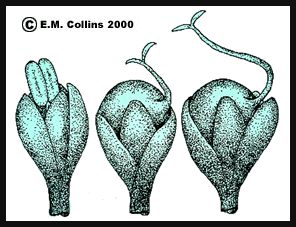
Brent,
I’ve been following your experiment from day one, and I marvel at
all you’re doing. I wish you nothing but success, and I know you’re
going to find the magic bullet. Stick with it.
